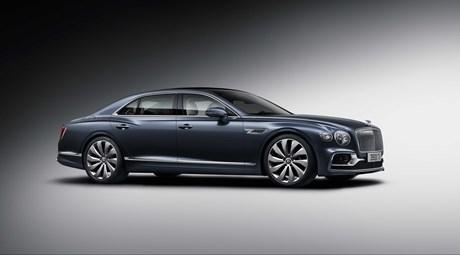
Bentley. Luxury on four wheels - overview of models
Content
 Perhaps that is why it has retained its unique character despite years of dependency on Rolls-Royce. Like Jan Benedek's The King, "he was always a little out of the way, he was a little at a disadvantage." After Bentley's Le Mans victory, Ettore Bugatti bitterly called them "the fastest trucks in the world". Could they have been different since their designer, Walter Owen Bentley, had previously worked on the railroads?
Perhaps that is why it has retained its unique character despite years of dependency on Rolls-Royce. Like Jan Benedek's The King, "he was always a little out of the way, he was a little at a disadvantage." After Bentley's Le Mans victory, Ettore Bugatti bitterly called them "the fastest trucks in the world". Could they have been different since their designer, Walter Owen Bentley, had previously worked on the railroads?
Rigid and viscous
The brand was created late, in the early 20s. Walter Owen previously traded French DFP cars with his brother Horace Milner. He tried aluminum pistons in them, which gave his career wings. The First World War broke out shortly thereafter and the then Royal Navy Air Force became interested in Bentley. He was allowed to engage in the secret construction of aircraft engines. First, Bentley innovations were used by Rolls-Royce in its first Eagle aero engine.
Bentley Motors Ltd. was registered in August 1919, but the first car was delivered to the customer only two years later. It had a three-liter four-cylinder engine with four valves per cylinder and was the perfect material for a powerful car.
Just as important as good performance was the reliability of the Bentley. Thanks to him, they have gained an excellent reputation, confirmed many times in motorsport, incl. on the Brooklands highway. In 1924, Bentley won the famous 24 Hours of Le Mans and repeated this feat four times in a row between 1927 and 1930. In 1930, Bentley was also in second place. Immediately after that, the company refused to participate in the race, believing that it had gained enough experience.
Ticket to win
W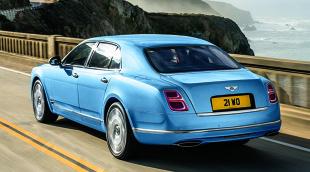 At that time it was owned by Wolfe Barnato, who bought the first Bentley in 1925, and a year later took over most of the shares of its manufacturer. The brand has brought together a group of rich and talented or just hot racers, the so-called Bentley Boys. Among them were military pilots, as well as a doctor. Barnato was one of the "boys" and the main "author" of the winning streak in France. He climbed to the highest podium at Le Mans three times: in 1928, 1929 and 1930.
At that time it was owned by Wolfe Barnato, who bought the first Bentley in 1925, and a year later took over most of the shares of its manufacturer. The brand has brought together a group of rich and talented or just hot racers, the so-called Bentley Boys. Among them were military pilots, as well as a doctor. Barnato was one of the "boys" and the main "author" of the winning streak in France. He climbed to the highest podium at Le Mans three times: in 1928, 1929 and 1930.
He had a wrestler's silhouette and fit the massive Bentleys like no other. Three months before his last Le Mans victory, he challenged the night express Le Train Bleu, which ran from Calais to the French Riviera and carried the cream of Europe and America. Racing on this train was popular and the latest winner was the Rover Light Six. Over dinner at the Carlton Hotel in Cannes, Barnato bet £100 that he would not only be faster than the train from Cannes, but that when the expressway reached Calais he would take his Bentley to London.
He worked despite the terrible weather, sometimes rainy, sometimes foggy, and a stop for a tire change. He parked his car in front of the Conservative Club at 74 St. James Street at 15.20:4 pm, 14 minutes before the express arrived in Calais. It was March 1930, XNUMX. The hundred pounds he'd won were immediately vanished. The French gave him a hefty fine for illegal road racing, and Bentley banned him from the Paris Motor Show for using a stunt for publicity.
Big fame is a joke
Barnato crashed the train in a 6,5-litre Bentley Speed Six, a sedate sedan bodied by HJ Mulliner. However, as a souvenir, he built another car, usually associated with the race. It had a sporty Gurney Nutting two-door body with a low roof and narrow windows. It is known as the "Blue Bentley Train". The confusion was compounded by Terence Cuneo, who immortalized this car in a painting dedicated to the duel with the train. Not only that, it was pure "artistic vision". The image of two cars going head-on was also suggested by the imagination. The routes of the train and the car never crossed.
The success of the brand also turned out to be an illusion. The Great Depression meant that in 1931, annual production fell by half from the record year of 1928, to just 206 units. Barnato withdrew financial support and the company filed for bankruptcy. Napier was preparing to acquire it, but was financed at the last moment by British Central Equitable, who offered a higher price. Then it turned out that Rolls-Royce was behind it. He invested £125, equivalent to £275 million today, to buy out a competitor.
Quiet sports
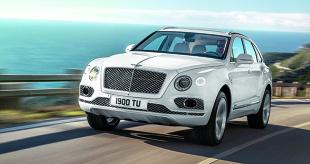 Bentley took the position of the "cheap" and "sporty" brand of Rolls-Royce. However, it was neither cheap nor literally competitive. Bentley's role was aptly expressed in the slogan first used on the new 3,5 1933-litre model: "The Quiet Sports Car".
Bentley took the position of the "cheap" and "sporty" brand of Rolls-Royce. However, it was neither cheap nor literally competitive. Bentley's role was aptly expressed in the slogan first used on the new 3,5 1933-litre model: "The Quiet Sports Car".
Walter Owen Bentley was "purchased" along with his company, but he was not allowed to start construction work right away. The 3,5-liter car was the development of the "light" concept of Rolls-Royce, which was supposed to attract buyers in the crisis years. It used a 20/25 six-cylinder engine with an increased compression ratio, a new camshaft and two more gluttonous SU carburetors. It was fast and comfortable. Contrary to the depressing circumstances in which the car was built, W. O. Bentley said it was "the finest car that ever bore his name."
Being a brand "straightforward" compared to Rolls-Royce, Bentley had a special privilege. New items that could damage the reputation of the "Winged Lady" were more likely to be introduced into it. Although independent front suspension was given to Rolls-Royce shortly before World War II in the Mark V model, it was a pioneer in the use of mass-produced steel bodies.
melting
It was common practice for luxury brands to provide a chassis that had been customized by the coachbuilder of the customer's choice. But, anticipating high demand after the war, Rolls-Royce ordered a standard sedan from Pressed Steel, which was supposed to be installed at the factory. The 1946 Bentley Mark VI received them first. Rolls-Royce joined the Silver Dawn three years later.
The most famous Bentley of this era was the 1952 R Continental, a four-seater two-door cat-back coupe with an aerodynamically modified Mulliner body. Later, four-door models, the “sports sedans” of the 50s, were built on this chassis. Despite the growing “rationalization”, which equated to the unification of the design of both brands, Bentley continued to stand out.
It wasn't until 1965 that he lost himself forever in Rolls-Roys, with the introduction of the T-series, twinned with the Silver Shadow. The new generation of cars featured self-supporting bodies for the first time, and the similarities were hard to avoid. When in 1970, as a result of financial difficulties, the aviation part of Rolls-Royce was spun off from it into a separate company, Bentley ran into trouble. A lone small company selling very expensive cars could not afford far-reaching model differentiation. Bentley production fell to 5 percent. general production of Rolls-Royce Motor Limited.
Like in the old days
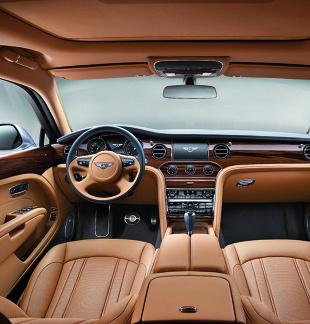 In 1980, the company merged with Vickers. The Bentley was slowly coming back to life. Among the cars of the new generation was the Mulsanne, whose name referred to the famous Le Mans straight. 1982 saw the introduction of the Mulsanne Turbo, reminiscent of the famous and fast yet quirky 4,5-litre "Blower Bentleys" of 1926-1930, with a Roots compressor proudly up front. One of them was James Bond in the stories of Ian Fleming. After the supercharged Mulsanne came the Turbo R, and in 1991 the two-door Continental R, a worthy successor to the famous 50s coupe, but the placement of the cheapest Bentley Eight in 1984-1992 was somewhat ironic. It was distinguished by a silver air intake in a fine oblique mesh. The eight-liter Bentley from 1930 to 1931 was one of the most expensive cars of its time. The equivalent of the Bentley State Limousine given to Queen Elizabeth II in 2002 on her golden jubilee.
In 1980, the company merged with Vickers. The Bentley was slowly coming back to life. Among the cars of the new generation was the Mulsanne, whose name referred to the famous Le Mans straight. 1982 saw the introduction of the Mulsanne Turbo, reminiscent of the famous and fast yet quirky 4,5-litre "Blower Bentleys" of 1926-1930, with a Roots compressor proudly up front. One of them was James Bond in the stories of Ian Fleming. After the supercharged Mulsanne came the Turbo R, and in 1991 the two-door Continental R, a worthy successor to the famous 50s coupe, but the placement of the cheapest Bentley Eight in 1984-1992 was somewhat ironic. It was distinguished by a silver air intake in a fine oblique mesh. The eight-liter Bentley from 1930 to 1931 was one of the most expensive cars of its time. The equivalent of the Bentley State Limousine given to Queen Elizabeth II in 2002 on her golden jubilee.
Separate at last!
At that time, Bentley had been in the hands of Volkswagen for four years. The 1998 deal was again a "double", but this time the scale was called Rolls-Royce. Volkswagen took over everything from Vickers except the rights to the brand and logo. All this time they were in the hands of the aviation company Rolls-Royce, which sold them to BMW. Volkswagen may have used the distinctive air intake design and "Spirit of Ecstasy" figure, but without the RR badge. In this situation, Germany was divided, and Rolls-Royce ended up with BMW.
Read also: New fine for vehicle owners introduced
This was very good news for Bentley. As part of the concern, he won the position of a one-of-a-kind brand. It could have endured a tough rivalry with Rolls-Royce in the old way, but their lineups have diverged. The RR focused on luxury and elegance, the Bentley on sports, although prestige sedans, also with long wheelbases, remained on sale. The symbol of the transformation was the Continental GT with a W12 engine, introduced in 2003.
Since then, Bentley's production has increased dramatically, with a brief decline due to the financial crisis of 2008. In 2016, it approached 12 2018 units. PCS. Then came the Bentayga, Bentley's first crossover, debuting in Geneva in XNUMX. This type of drive is another "first" for Bentley.
A great British brand today is like London. The tradition is set in motion, because a bright future will not be created by itself.
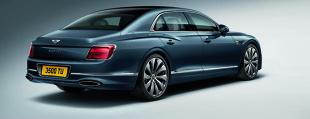 Bentley's latest model is the Flying Spur. Acceleration to 100 km/h takes 3,8 seconds, top speed is 333 km/h.
Bentley's latest model is the Flying Spur. Acceleration to 100 km/h takes 3,8 seconds, top speed is 333 km/h.
In terms of style, we are dealing with an evolution from its predecessor. At 5316 mm long, 1978 mm wide and 1484 mm high, the Bentley Flying Spur is slightly longer, but also shorter. Round headlights, chrome inserts and a vertical grille are the hallmarks of the new products.
The new Bentley Flying Spur is built on the platform previously used in the Porsche Panamera and Audi A8. The chassis is based on aluminum, composite materials, with electronically controlled four-wheel drive and a steering system that controls the steering system on all four wheels. There is also an active air suspension with three-chamber systems and a roll stabilization system.
Technically, Flying Spur uses solutions from the latest Continental GT.
Powered by a W12 twin supercharged engine. The 635-liter unit provides the car with 900 horsepower and 130 Newton meters of maximum torque. All-wheel drive is via an eight-speed gearbox. The interior is eye-catching, including a rotating center console that can function as a touchscreen display or a classic analog clock set. The wheelbase, which is 10 millimeters longer than its predecessor, provides luxurious rear space. As always, the atmosphere is interpreted with the finest woods and leathers. The base 19-speaker audio system can be replaced with a Bang & Olufsen system or a Naim top-end system with 2200 watts of speakers.
The price of the model is not yet known. The first copies of the car will be handed over to customers in early 2020. Its public debut will take place in the autumn during the IAA 2019.
Commentary – Michal Kiy – automotive journalist
The new Continental GT is a sigh of relief. Bentley as he used to be, not waiting with his tongue out to be caressed by fashion. The company also offers sedans, which, despite their "specific weight", have a sporty character, and finally opted for an SUV. Thanks to a large selection of models, production is increasing. But this particular brand tastes best in a coupe.
The Continental GT has a modern engine with a sophisticated multi-element combustion control system, as well as XNUMX-axle drive and a suspension that adapts to current conditions and needs. But this ultra-modern motor is assembled by hand in Crewe, and the electronics can be trimmed with quite traditional materials. The Bentley is part of the story, but it needs to continue, as the designers of the Continental GT are well aware.
See also: Porsche Macan in our test